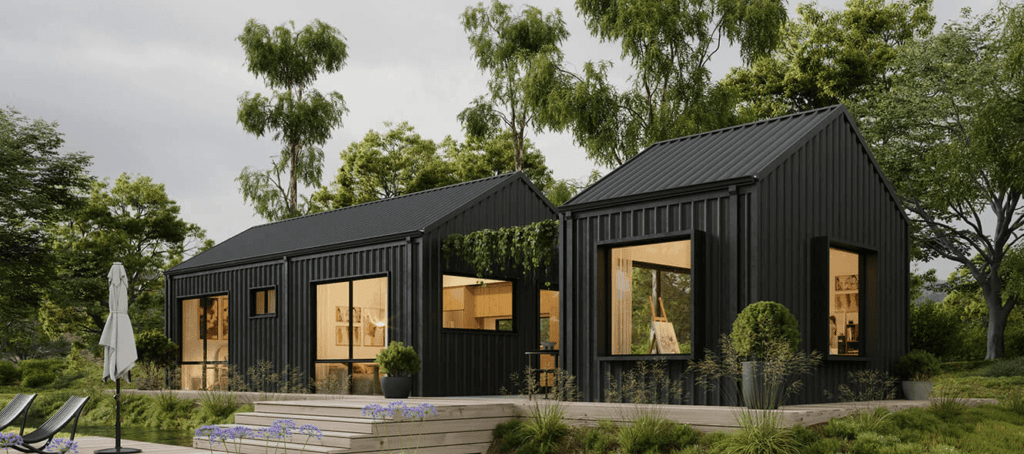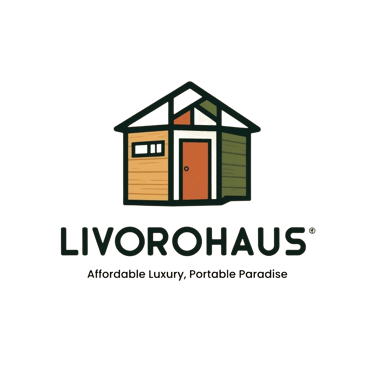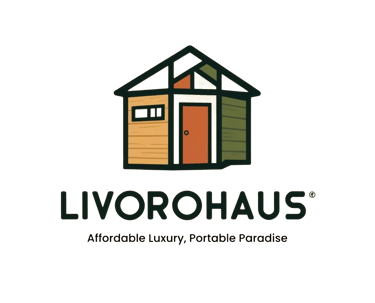The Ultimate Buyer's Guide: Portable Prefab Houses - What You Need to Know
1/13/20253 min read


Are you considering a portable prefab house but feeling overwhelmed by all the options and information out there? You're not alone. As we move through 2025, portable prefab houses have revolutionized the housing market, offering an innovative solution for modern living. Whether you're looking for a primary residence, vacation home, or flexible living space, this comprehensive guide will walk you through everything you need to know.
Understanding Portable Prefab Houses: A Modern Housing Revolution
Gone are the days when prefab homes meant sacrificing quality for convenience. Today's portable prefab houses combine cutting-edge technology with exceptional design, offering solutions that often surpass traditional homes in both efficiency and functionality.
"The portable prefab market has evolved dramatically," says Maria Rodriguez, a sustainable housing expert. "What we're seeing in 2025 is a perfect blend of innovation, sustainability, and practical living solutions."
Choosing Your Perfect Prefab: Types and Options
Let's break down the main types of portable prefab houses available today:
Container Homes: Innovation Meets Sustainability
Starting at $30,000 and ranging up to $200,000, container homes represent one of the most innovative approaches to portable living. These homes, crafted from modified shipping containers, offer:
Exceptional durability (25+ years)
Quick installation
Eco-friendly construction
Flexible design options
Sarah Chen, an architectural designer, notes: "Container homes have come a long way. Today's models can rival luxury apartments in both comfort and style."
Modular Prefabs: The Premium Choice
For those seeking more traditional housing features, modular prefabs offer the perfect middle ground. Ranging from $60,000 to $300,000, these homes provide:
Customizable layouts
Sizes from 400 to 3,000 square feet
Traditional home aesthetics
Superior build quality
Panel-Built Homes: Flexibility Meets Efficiency
Starting at $50,000, panel-built homes offer remarkable flexibility:
Easy transportation
Quick assembly (1-4 weeks)
Customizable designs
Cost-effective solutions
Tiny House Prefabs: Compact Living Perfected
Perfect for minimalists or those seeking a weekend retreat, tiny house prefabs start at just $25,000:
Highly mobile
Space-efficient designs
Lower maintenance costs
Reduced environmental impact
The Real Costs: Breaking Down Your Investment
Understanding the true cost of a portable prefab home involves more than just the base price. Here's what you need to consider:
Base Structure Costs (50-60% of budget)
Design fees: 5-10%
Engineering: 3-7%
Factory certification: 2-4%
Site Preparation
Think of site preparation as laying the foundation for your home's future. Typical costs include:
Foundation: $5,000-$25,000
Land clearing: $1,500-$5,000
Grading: $1,000-$3,000
Access road: $2,000-$8,000
Transportation and Installation
Don't overlook these crucial expenses:
Local delivery: $2,000-$5,000
Long-distance: $5,000-$15,000
Installation: Varies by size and complexity
Making It Your Own: Design and Customization
Today's prefab homes offer extensive customization options. Let's explore what's possible:
Exterior Choices
Modern materials offer durability and style:
Fiber cement siding: $5-15/sq ft
Metal panels: $4-12/sq ft
Wood cladding: $3-10/sq ft
Smart Home Integration
Welcome to the future of living:
Automated climate control
Integrated security systems
Energy management solutions
Smart lighting systems
The Installation Process: What to Expect
The journey from factory to finished home involves several crucial steps:
Pre-Delivery Planning
Site survey completion
Permit acquisition
Utility coordination
Timeline establishment
Installation Phase "A successful installation is all about preparation," explains Tom Martinez, a prefab installation specialist. "We typically complete the entire process in 3-7 days, but proper planning is essential."
Navigating Permits and Regulations
Understanding local requirements is crucial. You'll need:
Building permits
Transportation permits
Occupancy certificates
Environmental approvals
Pro Tip: Work with local authorities early in the process to avoid delays.
Setting Up Your Site: Location Matters
Your site's characteristics significantly impact your project:
Essential Considerations
Soil quality
Drainage patterns
Access requirements
Utility availability
Foundation Options
Choose based on your specific needs:
Concrete slab: Best for permanent installation
Pier and beam: Excellent for uneven terrain
Crawl space: Added storage and accessibility
Utility Connections: Getting Connected
Plan for these essential services:
Water supply: $1,000-$5,000
Electrical service: $1,000-$3,000
Sewage system: $3,000-$8,000
Gas connection: $500-$2,000Financing Your Dream: Understanding Your Options
Modern financing options have evolved to accommodate prefab homes:
Traditional Mortgages
Many lenders now offer conventional mortgages for prefab homes:
Competitive interest rates
Standard down payment requirements
Flexible terms
Construction Loans
Perfect for the building phase:
Short-term financing
Convertible to permanent mortgages
Structured draw schedules
Maintaining Your Investment
Regular maintenance ensures longevity:
Seasonal Checklist
Spring:
Exterior inspection
System checks
Weather sealing review
Summer:
AC maintenance
Exterior cleaning
Pest inspection
Fall:
Weatherization
Heating system check
Roof inspection
Winter:
Insulation check
Pipe protection
Snow load monitoring
Making Your Decision: A Practical Guide
Consider these key factors:
Budget Alignment
Total available funds
Financing options
Hidden cost buffer
Lifestyle Needs
Space requirements
Mobility needs
Long-term plans
Location Factors
Climate considerations
Local regulations
Site accessibility
Looking to the Future
The portable prefab market continues to evolve:
Increasing property values
Advancing technology integration
Growing sustainability features
Expanding design options
Expert Tips for Success
Research Thoroughly "Take time to understand all your options," advises Jennifer Wong, a prefab housing consultant. "The perfect prefab home balances your needs, budget, and future plans."
Plan Carefully
Document everything
Create detailed timelines
Build in contingencies
Maintain clear communication
Choose Wisely
Compare manufacturers
Check references
Review warranties
Understand guarantees
Conclusion: Making Your Dream Home a Reality
Portable prefab houses represent the future of flexible, sustainable living. As you embark on your prefab journey, remember:
Take time to research
Plan comprehensively
Budget realistically
Choose quality
Think long-term
With this guide in hand, you're well-equipped to make an informed decision about your portable prefab home. The perfect blend of innovation, sustainability, and practical living awaits.
Last updated: January 13, 2025. All prices and information are subject to change based on location and market conditions.


